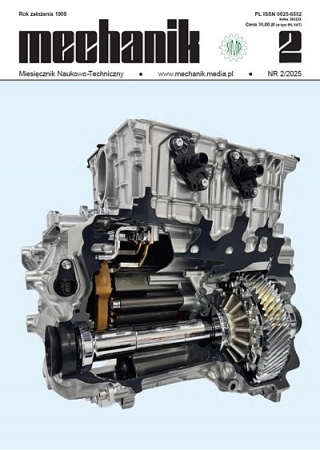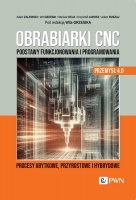Wpływ kąta ułożenia warstw włókien elementu wykonanego metodą FDM na wytrzymałość na zginanie
The influence of fibers layers angle of an element prepared by FDM technology on bending strength
Mechanik nr 12/2015 - Wersje autorskie artykułów z I Krajowej Konferencji Naukowej "Szybkie prototypowanie Modelowanie – Wytwarzanie – Pomiary" zamieszczone na płycie CD
STRESZCZENIE: Artykuł przedstawia wyniki badań wytrzymałościowych, których celem było ustalenie wpływu kąta ułożenia warstw na wytrzymałość elementów. Przeprowadzono próbę trójpunktowego zginania na seriach próbek różniących się kątem ułożenia warstw składowych elementu.
SŁOWA KLUCZOWE: próba trójpunktowego zginania, FDM, ABS, szybkie prototypowanie.
ABSTRACT: The paper describes the results of a strength tests. The main goal of the reserches was to determine the impact of the fiber layers angle on the tested element strenght. The three-point bending test was performed for the sample series with the different fiber layer angle.
KEYWORDS: three-point bending test, FDM, ABS, rapid prototyping.
BIBLIOGRAFIA / BIBLIOGRAPHY:
- Oczoś Kazimierz: „Rosnące znaczenie Rapid Manufacturing w przyrostowym kształtowaniu wyrobów”. Mechanik (2004)4, s. 241-257.
- Tyczka M., John M.Skarka W.“The problem of a preparing vertical elements by FDM technology”XIV International Technical Systems Degradation Conference. LiptovskyMikulas, 8-11 April 2015 (2015), s. 150-153.
- Pham Due, Gault Rosemery “A comparison of rapid prototyping technologies” International Journal of Machine Tools & Manufacture, (1998)38, s. 1257–1287.
- Xue Yan, Gu Pei “A review of rapid prototyping technologies and systems”. Comtwier-AidedLksian. (1996)4, s. 307-316.
- Yongnian Yan, Shengjie Li, Renji Zhang, Feng Lin, Rendong Wu, Qingping Lu, ZhuoXiong, Xiaohong Wang.“Rapid prototyping and manufacturing technology: principle, representative technics, applications, and development trends”TSINGHUA SCIENCE AND TECHNOLOGY (2009)14, s.1-12.
- http://www.rapidpro.pl
- Bellini Anna GüçeriSelçuk “Mechanical characterization of parts fabricated using fused deposition modeling”. Rapid Prototyping Journal, (2003)9, s. 252 – 264.
























